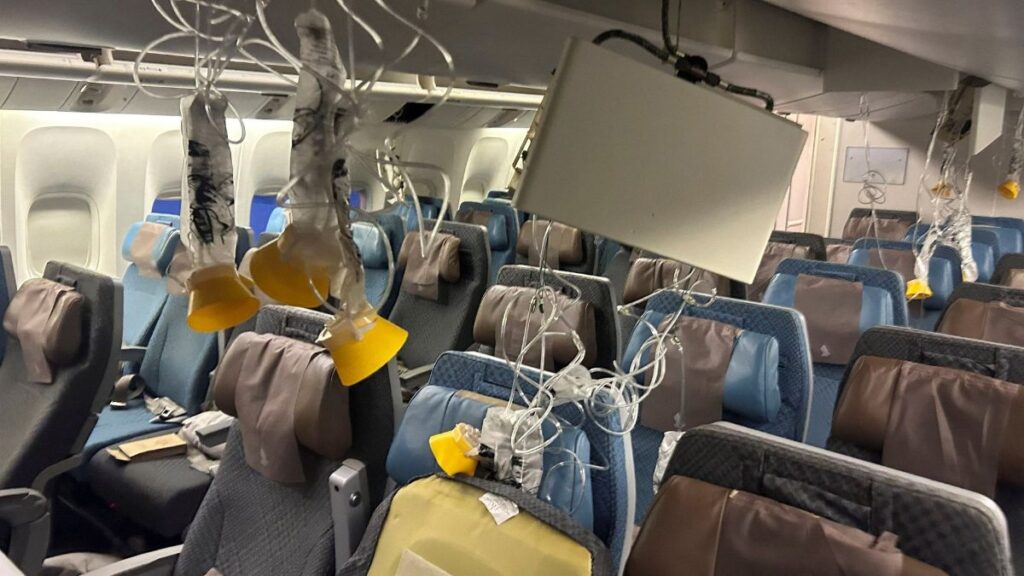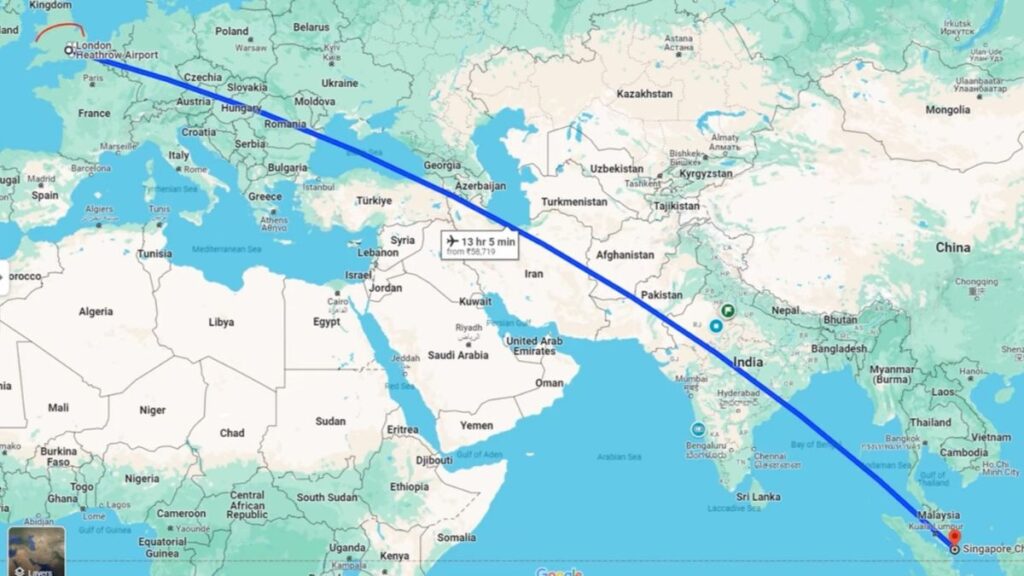
A Singapore Airlines flight encountered severe turbulence over the Indian Ocean, causing the plane to descend 6,000 feet within about three minutes, the airline reported on Tuesday. This incident resulted in the death of a 73-year-old British man and left more than two dozen passengers injured. The flight, originating from London’s Heathrow airport and destined for Singapore, was diverted to Bangkok due to the turbulence and challenging weather conditions.
Authorities have suggested that the British man might have suffered a heart attack, though this remains unconfirmed. The Boeing 777, carrying 211 passengers and 18 crew members, landed at Bangkok’s Suvarnabhumi Airport, where airport director Kittikachorn stated that most injuries were head-related.
Search
Recent Posts:
- OpenAI Brings ChatGPT to be used in WhatsApp: Here’s How It Works and What You Can Do To Use It.
- Realme 14x 5G: A Budget Smartphone With Premium Features.
- Exploring Apple Genmoji: A New Era of Custom Emoji Creation.
- 2024 United States Presidential Election: Donald Trump Declares Victory in 2024 Presidential Election
- Chancellor Olaf Scholz’s Visit to India: Advancing Indo-German Cooperation on Defense, Trade, and Regional Stability.
Singapore Airlines Flight Diverts to Bangkok

Bangkok’s Samitivej Srinakarin Hospital reported that 71 people were treated, with six sustaining severe injuries. Singapore Airlines expressed deep regret for the distressing experience, committing to provide necessary assistance to those affected. The passenger list included 56 Australians, 47 British, 41 Singaporeans, and at least three Indian nationals. The turbulence coincided with thunderstorms in Thailand, marking the start of the country’s rainy season.
At 3:35 pm, Suvarnabhumi Airport received a distress call from the flight, requesting an emergency landing due to passenger injuries. The plane landed at 3:45 pm local time (8:45 am GMT), with emergency vehicles promptly attending to the injured. Singapore’s transport ministry announced it would send investigators to Bangkok, while President Tharman Shanmugaratnam expressed hopes for the recovery of the injured. Boeing pledged its support to Singapore Airlines, extending condolences and expressing solidarity with those affected.
This incident is the latest in a series of troubles involving Boeing aircraft. Earlier this year, an Alaska Airlines 737 MAX experienced a fuselage panel blowout, and the company has faced scrutiny following two fatal crashes in 2018 and 2019. Amid ongoing safety and manufacturing concerns, Boeing’s CEO Dave Calhoun announced his departure in March. The company is under pressure from the US Federal Aviation Administration to improve safety and quality control, with a deadline in late May to present a satisfactory plan.
What is Air Turbulance?
Air turbulence is the irregular or chaotic movement of air in the atmosphere. It can cause bumpy or uncomfortable conditions during a flight, but it is a common and generally safe phenomenon. There are several types of turbulence, each caused by different atmospheric conditions:
1. Clear Air Turbulence (CAT): This type occurs at high altitudes, typically above 15,000 feet, and is not associated with clouds or storms. It is often encountered along jet streams and is difficult to predict and detect with the naked eye.
2. Mechanical Turbulence: This happens when obstacles like mountains, buildings, or rough terrain disrupt the airflow near the ground, causing eddies and swirling air patterns.
3. Thermal Turbulence: Caused by the uneven heating of the Earth’s surface, which results in rising warm air (thermals) and descending cooler air. This is common on sunny days and can be felt during takeoff and landing.
4. Wake Turbulence: Produced by the passage of an aircraft, particularly large jets, creating vortices from their wingtips. It can pose a hazard to other aircraft if they pass through these vortices.
5. Convective Turbulence: Associated with convective weather conditions such as thunderstorms and cumulus clouds. Updrafts and downdrafts within these clouds can be quite strong.
6. Mountain Wave Turbulence: Occurs when strong winds blow over mountain ranges, creating waves in the atmosphere. These waves can extend far downwind of the mountains and cause significant turbulence.
While turbulence can be uncomfortable, modern aircraft are designed to withstand it, and pilots are trained to handle it. Flight crews receive weather briefings before takeoff and use onboard weather radar to avoid areas of severe turbulence whenever possible.
To read more topics, please visit: https://insightfulbharat.com






